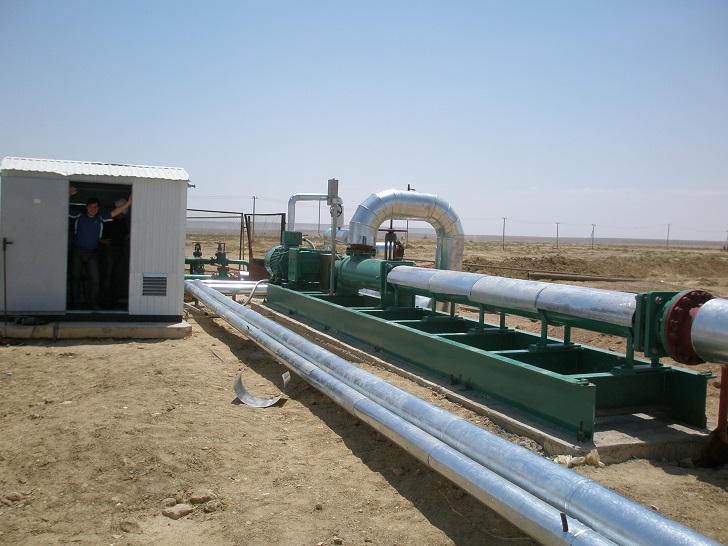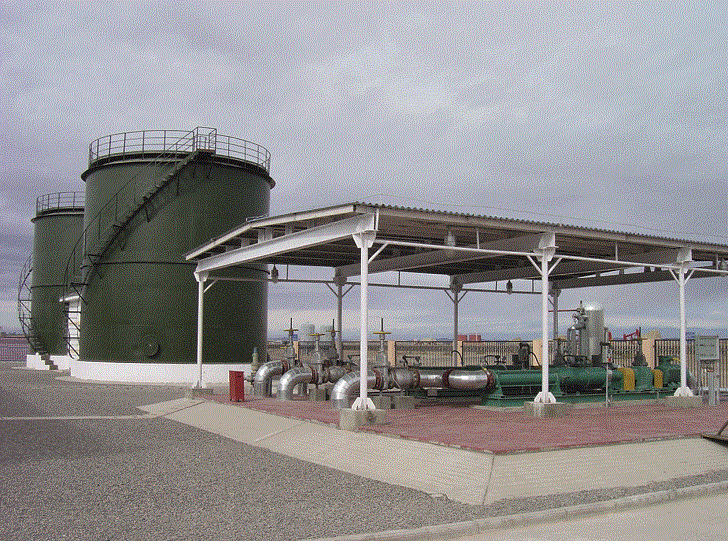

Keeping development expenses of new fields down is difficult when separation technology required for gas, water and oil incurs high costs. The Palogue oil field in southern Sudan installed a multi-phase pumping system, eliminating the need for separation in the oil field.
In the Palogue oil field, the gas volume fraction (GVF) is on average over 80% with sand fractions of up to 3%. In order to be able to efficiently convey the multiphase mixture, 20 multi-phase pumps were installed, each directing the yield of up to 24 boreholes to a central separator station, some of them over 15 km away.
High reliability To protect the pumps against solar radiation which can heat the surface up to 70ºC, and protect them from flooding after heavy rainfall, the pumps were equipped with roofs and mounted on elevated foundations. In order to achieve the highest possible operational reliability of the remote monitored and controlled pump systems, an extensive control system with connection to the supervisory process control system was installed. A particularly robust version of the pump system was used.
As worldwide demand for oil and gas continues unabated, extraction companies need to be able to tap into hard-to-reach oil reserves, optimise existing fields and deal with rising cost pressures. This is particularly important with sources in which heavy oils with extremely high viscosities and high solids content are produced.
High demands The development of oil fields with heavy oils or bitumen as well as oil fields, located in inaccessible areas, places ever higher demands on the conveying equipment and the pump technology. The conveying systems must be matched to the media and ambient conditions.
Netzsch Pumps & Systems has responded to this need to deal with this by developing a range of specialised positive displacement pumps, especially multi-phase pumps, which are particularly cost-effective in oil field development where high demands are put on conveying equipment and pump technology. Netzsch’s multiphase pump has been specifically developed to deal with this type of application. It manages mixtures of oil, water and gas with sand fractions and achieves delivery rates of up to 800 m³/h.
Multiphase mixtures are pumped directly to a central treatment station and the complete separation technology at the borehole can be omitted. Thanks to the low shear forces and the low pulsation, there are hardly any emulsion effects during transport.
At central separators, the media phases can be easily separated, significantly reducing infrastructure costs for the entire field. This means that the use of the gas share becomes more economical, avoids the flaming of gas in the fields and contributes to environmental requirements.
The very high costs of separation technology for gas, water and oil separation can be drastically reduced by installing a multi-phase pumping system because the multiphase mixture can be pumped from different wells directly to a central treatment station. This eliminates costly separation in the oil field.
Reducing costs In addition, oil yield is increased with multi-phase pumps. Normally, downhole pressure must overcome the pressure drop to the nearest separator station, which reduces the flow rate of the oil well. If a multi-phase pump is installed, it will take over the transfer to the next separation, reducing the borehole pressure and thus increasing the oil yield.
The multi-phase pumping system must be able to cope with highly fluctuating delivery conditions. Thus, the ratio between gas and oil changes continuously, inlet pressures up to 100bar and 100% gas-rich phases are possible. Even with sand shares of 3%, long lifetimes are achieved.






